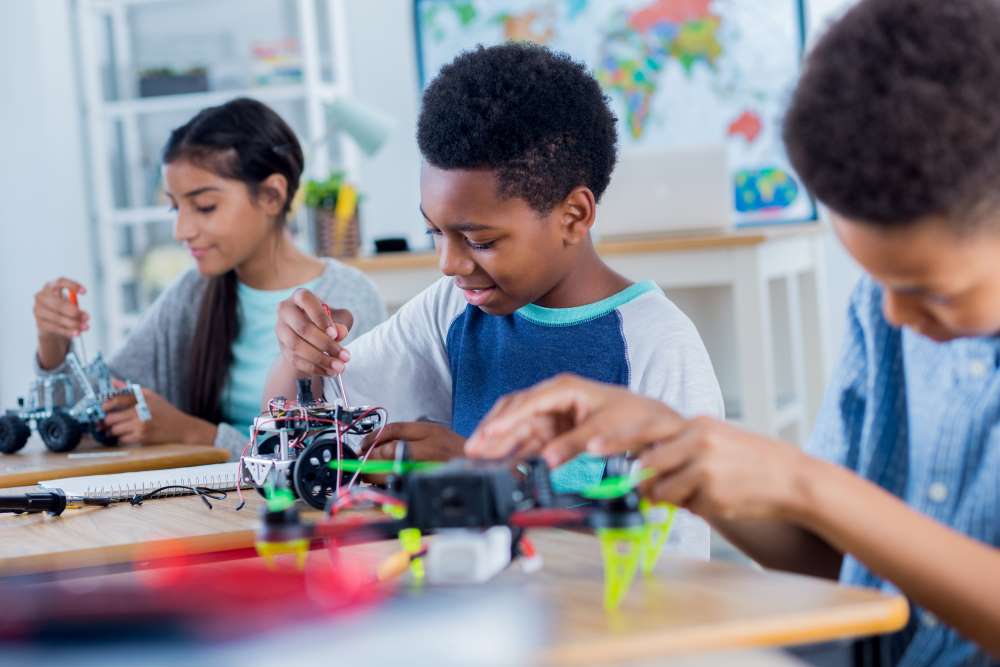
Everybody learns in different ways. That saying likely rings true for you and your child. Some people pick up things quickly, while others need a moment to process the material. When your child is in school, the way they’re learning is integral to their success. One skill valued in any field or industry is critical thinking. Schools across the country are starting to help their students think critically and make real-life connections with integrated learning.
What Is Integrated Learning?
Integrated learning happens when students learn concepts from different disciplines and put them together in a problem-solving way. This method is a novel way to increase students’ critical thinking skills and challenge them to think outside the box. A holistic learning style could be what your child needs to succeed due to its many benefits.
How Can Integrated Learning Benefit Your Child?
Integrated learning is becoming increasingly popular as teachers see the positives for students like your own. It’s an opportunity to combine disciplines and give students long-term educational benefits, including:
-
Subject appreciation: One key part of integrated learning is combining two subjects that seem unassociated with each other. Using this method, your child may develop a preference for a discipline they don’t like when combining it with one they enjoy. For example, your child may like mathematics but not English. An integrated learning activity may combine these two and help your student appreciate language arts more.
-
Real examples: While some exercises include hypothetical situations, an integrated learning curriculum can include real-life examples. This education helps your child gain perspective on what’s happening in the world around them. This experience at any age helps students become well-rounded and better citizens.
-
Better learning environment: Integrated learning curriculum creates better learning environments, primarily for two reasons. Teachers can help your students and themselves by combining multiple subjects into one lesson instead of feeling rushed to teach every subject separately throughout the day. And this system promotes collaboration, which is an essential skill for your child to learn at any age.
How Do Colleges Implement Integrated Learning?
Integrated learning is essential to a college curriculum because it involves young adults who are about to enter or already are in the workforce. Universities use integrated learning curricula to engage students and make the learning material impact students’ lives. Colleges have separate departments for each subject matter, so it’s easier to delve into complex subject matter for multiple disciplines.
For example, your college student may be interested in history and medicine. An integrated learning curriculum allows them to combine the two subjects and study the history of medicine in past centuries. It can also lead to incredible opportunities to study abroad. Merging international studies with any topic, such as medicine, mathematics, language arts and others, can help your college student take the trip of a lifetime to another nation. You can also consider using Google Slides presentation templates to enhance the educational experience further, which can add a visually appealing and structured element to your integrated learning materials.
How Do Grade Schools Use Integrated Learning?
While it often occurs in college, integrated learning can also happen at the elementary and middle school levels. Teaching children at a young age how to think critically and connect concepts helps significantly in the long run. Integrated learning is a unique learning experience that will help your elementary or middle school-aged child take a holistic approach to learning.
This educational approach can be complex, so starting integrated learning at a simple difficulty level for young children is vital. At this age, they may do a project that addresses their artistic and mathematical skills.
For example, they may use scales and measurements to determine how large a shape could be, and then they draw it on paper or any other art canvas. Mathematics and art have some similarities but are not often associated. Combining the two exercises a young child’s mind and helps them become more well-rounded early.
Another example combines science and civics in a practical way. This method may be applicable for middle school or even high school students. A teacher could have your child identify a problem, such as an environmental issue, on the school grounds or in the community. Your student would then craft a letter to a government official, such as a city council member, the mayor, a state legislator or a United States congress member.
In the letter, they would use their scientific knowledge to explain what’s happening and what they can do to fix it. This hands-on activity combines science and political science because it allows your student to identify a problem using their scientific knowledge. Then, they’ll use their social studies knowledge to do their civic duty and write a letter to a government official calling for action on the issue.
Integrated Learning for Your Child
Integrated learning is a relatively new concept in education, and it’s one making education better for children like your own. Students from primary school to college use integrated learning to challenge their minds and think critically. Broadening a child’s horizons is a concept that will have long-term benefits in school and after graduation when they decide on a career.



























